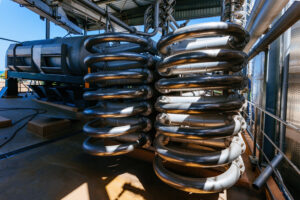 When it comes to thermal exchange, there are two distinct methods of moving heat. Both of these are helpful in protecting your equipment, but one may be more suitable for your needs than the other. So what, exactly, is the difference, and how do you make the decision between each of them?
When it comes to thermal exchange, there are two distinct methods of moving heat. Both of these are helpful in protecting your equipment, but one may be more suitable for your needs than the other. So what, exactly, is the difference, and how do you make the decision between each of them?
At Noren Thermal Solutions in Taylor, TX, we are here to help you make the right choices in your thermal management. Since 1968, we have been working alongside business owners and operators to ensure that your thermal management needs are met, and that starts with a dedication to the craft. Both passive and active solutions can be helpful in giving you an ecologically friendly way of handling your heat, but each has its own strengths. Learn a little bit about how these methods operate, and then give us a call to learn more about your choices!
Passive Heat Exchange Allows Your Thermal Energy To Naturally Flow
Like you might imagine, passive heat exchange gives your thermal energy the chance to move on its own, and a prime example of this technology is in our heat sinks. With heat sinks, they absorb thermal energy, and then dissipate it into the surrounding air. These are easily identifiable, as they often have many folds in order to maximize the surface area in contact with area around them. When you want to cool down circuit boards and other electronics, our heat sinks can help you to manage your excessive temperatures, as we use highly conductive copper rather than cheaper aluminum.
Heat pipes are another form of passive cooling, and they are one of the most efficient ways of doing it. Heat pipes take advantage of the shift between liquid and gas; as the liquid heats up next to the equipment it is designed to protect, it turns to a gaseous form and moves to a safer location. This gas can then shift back into a liquid and flow to the original place to be reheated.
Keeping Your Equipment Safe With Active Heat Exchange
Active movement is the other thermodynamic concept behind heat exchangers. You might be familiar with this process through our air-to-air systems, which can be beneficial in electrical enclosures and other related spaces. This method forces heated air away from the location, traditionally using a fan system. By artificially creating movement, active heat exchange can keep your equipment cool and safe from the damages of heat.
Find Out More About Active And Passive Exchange With Noren Thermal Solutions
When you need to upgrade or replace your old thermal management system, talk to a trusted team with over 50 years of experience in the field. For more information, give us a call today at Noren Thermal Solutions in Taylor, TX at (512)595-5700!



